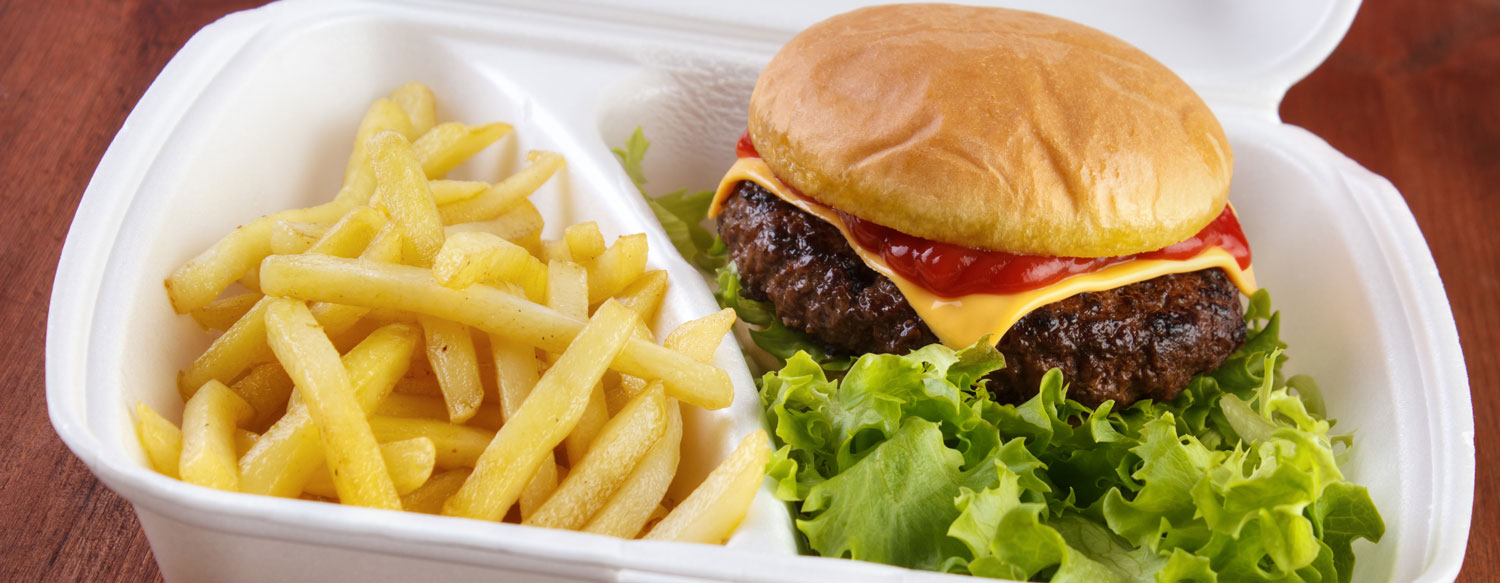 Recyclable and eco friendly packaging are both extremely important for today’s food service companies. Unfortunately, recent studies show that companies in the food industry may not be doing as well with sustainable practices as they would like the general public to believe.
Recyclable and eco friendly packaging are both extremely important for today’s food service companies. Unfortunately, recent studies show that companies in the food industry may not be doing as well with sustainable practices as they would like the general public to believe.
The Recycling Packaging Woes of Food Service Companies
A new report released in a joint effort between two environmental non-profits, As You Sow and the Natural Resources Defense Council, paints a grim picture of the use of eco friendly packaging in the food service industry. According to the study, while plastic packaging is the fastest growing form of packaging in the United States, less than 15% of it is being recycled. This lack of recycling is not only environmentally harmful, it’s expensive: there is $11.4 billion in wasted plastics each year, according to the study.
Based on the study’s findings, some of the brands that are doing the worst with sustainability and recyclable packaging are major household names in the United States: Quizno’s, Burger King, Dairy Queen, and Domino’s Pizza were slapped with a rating of “poor” because of their weak public showings of leadership in the sustainability field.
How Has the Industry Responded?
The results of this study have already been widely reported, painting a negative picture of many leading food service brands in North America. Conrad MacKerron, a senior vice president at As You Sow and contributing author to the report, recently stated that “most leading U.S. fast food, beverage, and packaged goods are coming up significantly short” when it comes to sustainability.
However, not everyone in the plastics industry is taking this news lying down. Clare Goldsberry at Plastics Today points out that there is only so much that brands can do to promote recycling, since the decision to recycle ultimately is one made by the consumer. She argues that some of the blame should fall on the shoulders of the people who eat or drink products from these brands and don’t show any regard for the environment.
Regardless of who is primarily responsible for the lack of plastic recycling, it’s still important that eco friendly packaging begin to see wider use in the future, to improve the environment and help companies chop that $11.4 billion number down substantially. Just a few of the ways that companies are using recyclable packaging to benefit their own business and the environment at large include:
-
Serving food and drink to dine-in customers in reusable serviceware. Panera and Starbucks are two major brands that were recognized as being leaders in this field.
-
Make recycling signage more clear: by making recycling instructions more clear in customer-facing locations, companies can improve the amount of recyclable packaging that actually gets recycled. Signage should explicitly say what can and cannot be recycled and list the exact products they are being used at the restaurant.
-
If you are not doing so already, place recycling bins right next to trash cans to make recycling easier. Many stores will even further break bins down by glass, plastic, and paper products only.
-
Consider alternative packaging options. Are there any more sustainable options that your organization can switch to so that you can reduce the amount of material that goes into your products? PepsiCo, for example, reports that they have reduced the packaging weight of all products produced in the last five years by over 350 million pounds, saving millions of pounds of plastic throughout Europe and the United States.
Everybody has a responsibility to do their share to conserve the environment, but plastics manufacturers and food service companies have the ability to set the tone for the future. By working on your own organization’s sustainability, you can save your company money and minimize the amount of harmful waste that you produce simply by switching to eco friendly packaging and implementing recycling practices at facilities.

About Michael Wilson
Michael Wilson is AFFLINK'S Vice President of Marketing and Communications. He has been with the organization since 2005 and provides strategic leadership for the entire supply chain team. In his free time, Michael enjoys working with the Wounded Warrior Project, fishing, and improving his cooking skills.





